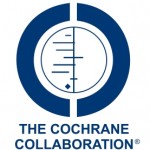
Prominent lower front teeth can be associated with a large or prominent lower jaw and/or a small or retrusive upper jaw . The reasons why this occurs are not well understood. Treatments to correct this range from orthodontic to surgical. The aim of this Cochrane review was to evaluate different treatments of Angle Class III malocclusion in adults.
What did they do
The Cochrane Oral Health Group Trials Register, Cochrane CENTRAL , MEDLINE ; EMBASE ; LILACs, BBO, and SciELO databases were searched. They planned to include randomized or quasi-randomized controlled trials of treatments for adults with an Angle Class III malocclusion. Data collection and analysis followed the usual Cochrane methodology.
What did they find
Nine potentially eligible trials were identified only two of which met the inclusion criteria. There are different types of surgery for this type of malocclusion but only trials of mandible reduction surgery were identified. One trial compared intraoral vertical ramus osteotomy (IVRO) with sagittal split ramus osteotomy (SSRO) and the other trial compared vertical ramus osteotomy (VRO) with and without osteosynthesis. Neither trial found any difference between the two treatments. The trials did not provide adequate data for assessing effectiveness of the techniques described.
They concluded
There is insufficient evidence from the two included trials, to conclude that one procedure is better or worse than another. The included trials compared different interventions and were at high risk of bias and therefore no implications for practice can be given. Further high quality randomized controlled trials with long term follow-up are required.
Minami-Sugaya H, Lentini-Oliveira DA, Carvalho FR, Machado MAC, Marzola C, Saconato H, Prado GF. Treatments for adults with prominent lower front teeth. Cochrane Database of Systematic Reviews 2012, Issue 5. Art. No.: CD006963. DOI: 10.1002/14651858.CD006963.pub2.

[…] Dental Elf – 21st May 2012 – Insufficient trial evidence that any surgical treatment f… […]